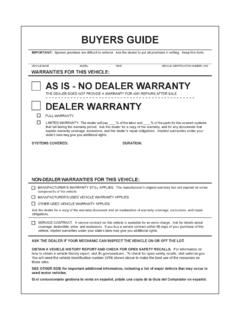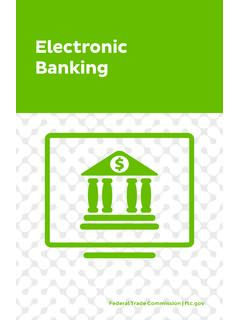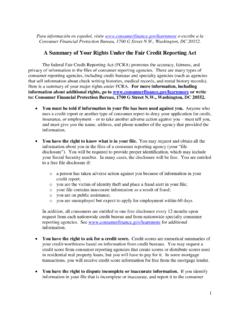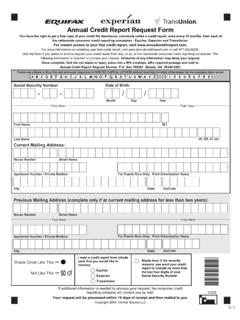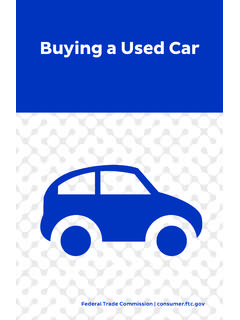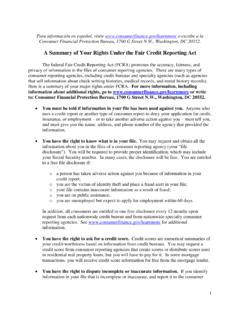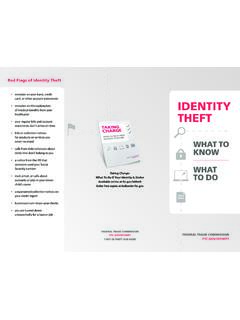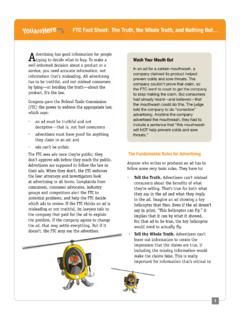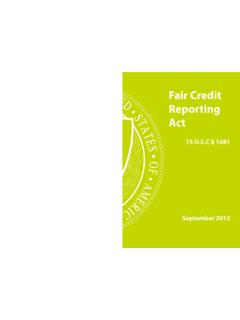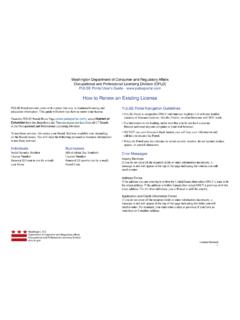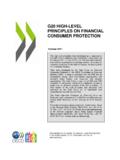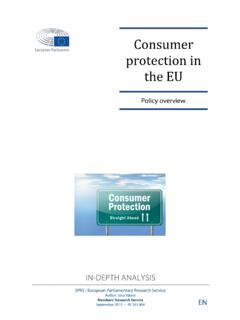Transcription of Guide for Assisting Identity Theft ... - Consumer Information
1 Guide for Assisting Identity Theft VictimsFederal Trade Commission | September Table of Contents Table of Contents .. 1 I. Overview .. 3 II. Understanding Identity Theft and How to Assist its Victims .. 4 The Initial Screening Call .. 6 Preparing for a First Meeting .. 9 The Intake Meeting .. 10 Making an Action Plan .. 10 Attorney Intervention .. 15 Private Rights of Action and Consumer Protection Remedies .. 16 III. The Primary Tools for Victims .. 17 Primary Tools To Minimize Further Fraud .. 17 Primary Tools to Show That the Victim is Not Responsible for the Fraud and to Correct Credit Reports.
2 20 IV. Addressing Account-Related Identity Theft .. 25 Blocking Information in Credit Reports (under Sections 605B and 623(a)(6)) .. 26 Disputing Errors in Credit Reports (Under Sections 611, 623(b), and 623(a)(1)(B)) .. 29 Disputing Fraudulent Transactions with Banks and Creditors .. 31 Disputing Fraudulent Transactions with Check Verification Companies .. 31 Dealing with Debt Collectors Seeking Payment for Accounts Opened or Misused by an Identity Thief .. 38 Obtaining Business Records Relating to Identity Theft .. 40 V. Addressing Other Forms of Identity Theft .
3 42 Identity Theft & Children .. 42 Criminal Identity Theft .. 42 Identity Theft Involving Federal Student 43 Identity Theft Involving the Internal Revenue Service .. 45 Identity Theft Involving the Social Security Administration .. 45 Medical Identity Theft .. 46 The Other Consumer Reports: Specialty Consumer Reports .. 46 Appendix A: Key Identity Theft Concepts and Tools .. 47 Glossary .. 48 Free Annual Credit Reports and Other Free Reports .. 53 Proof of Identity .. 56 Authorization Form for Attorneys .. 58 2 Online Resources for Attorneys and Victim Service Providers.
4 59 Appendix B: Checklists .. 61 List of Sample Questions for Intake Interview .. 62 Checklist for General Steps Addressing Identity Theft .. 66 Checklist - Blocking Fraudulent Information from Credit Reports, Credit Reporting Agencies Obligations under FCRA Section 605B .. 71 Checklist - Debt Collectors Obligations under FCRA Sections 615(f), (g) and FDCPA Sections 805(c), 809(b) .. 74 Appendix C: Sample Letters .. 76 Blocking Request Letters Under 605B and 623(a)(6)(B) .. 77 Dispute Letters Under 611 and 90 Disputing Fraudulent Transactions with Check Verification Companies.
5 99 Disputing Fraudulent ATM and Debit Card Transactions .. 103 Credit Card Issuer Obligations under the FCBA .. 109 Disputing Fraudulent Charges and New Accounts with Other Creditors .. 112 Disputing Debts Resulting From Identity Theft with Debt Collectors .. 117 Obtaining Business Records Relating to Identity Theft .. 123 Appendix D: Core Consumer Educational Materials .. 129 Recommended Identity Theft Materials .. 129 Appendix E: Federal Statutes and Regulations .. 130 The Fair Credit Reporting Act (FCRA) .. 130 Other Statues & Regulations.
6 130 3 I. Overview This Guide , prepared by the Federal Trade Commission (FTC), is intended to assist attorneys counseling Identity Theft victims. It explains: common types of Identity Theft the impact of Identity Theft on clients the tools available for restoring victims to their pre-crime status. Specifically, the Guide highlights the rights and remedies available to Identity Theft victims under federal laws, most notably: the Fair Credit Reporting Act (FCRA) the Fair Credit Billing Act (FCBA) the Fair Debt Collection Practices Act (FDCPA) the Electronic Funds Transfer Act (EFTA).
7 It also includes Information and materials published by other organizations that address less common, more complex, and emerging forms of Identity Theft , such as medical or employment related Identity Theft . 4 II. Understanding Identity Theft and How to Assist its Victims Each year, millions of Americans discover that a criminal has fraudulently used their personal Information to obtain goods and services and that they have become victims of Identity Theft . Under federal law, Identity Theft occurs when someone uses or attempts to use the sensitive personal Information of another person to commit fraud.
8 A wide range of sensitive personal Information can be used to commit Identity Theft , including a person s name, address, date of birth, Social Security number (SSN), driver s license number, credit card and bank account numbers, phone numbers, and even biometric data like fingerprints and iris scans. New & existing Financial Accounts The most common form of Identity Theft , and the main focus of this Guide , involves the fraudulent use of a victim s personal Information for financial gain. There are two main types of such financial frauds: Using the victim s existing credit, bank, or other accounts A victim of existing account misuse often can resolve problems directly with the financial institution, which will consider the victim s prior relationship with the institution and the victim s typical spending and payment patterns.
9 Opening new accounts in the victim s name A victim of new account Identity Theft usually has no preexisting relationship with the creditor to help prove she is not responsible for the debts. The new account usually is reported to one or more credit reporting agencies (CRA), where it then appears on the victim s credit report. Since the thief does not pay the bills, the account goes to collections and appears as a bad debt on the victim s credit report. Often, the victim does not discover the existence of the account until it is in collection.
10 The victim must prove to the creditor that she is not responsible for the account and clear the bad debt Information from her credit report. Many times victims experience both. Other types of Identity Theft are listed in the Glossary. 5 The Goals for Victims This Guide will help you assist a victim achieve three goals: 1. stopping or minimizing further fraud from occurring 2. proving that Identity Theft has occurred and that the victim is not responsible for debts incurred in her name and 3. correcting any errors on the victim s credit report to restore her financial reputation and credit score The Guide initially assumes a worst-case scenario, where the victim has experienced new account Identity Theft , and a fraudulent new account has been added to her credit report.
